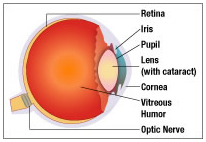
Dr. Abdulhak is committed to offering the safest and most effective treatment for cataracts. Cataract surgery is performed using modern surgical techniques that are designed to make your experience comfortable. In just a few hours, we can gently remove your cataracts and restore your vision with minimal discomfort and maximum results.
We are excited to offer our cataract patients many options for lens implants, including ReStor® and Toric lens implants. With these lens implants, cataract patients can experience clear vision at all distances, even for close-up reading with less need for glasses!
A cataract is clouding of the eye’s lens that prevents the eye from focusing on lights, colors, and shapes — causing images to appear fuzzy or blurred. The development of cataracts is a normal part of the aging process; however, cataracts may sometimes develop early as a result of disease, trauma to the eye, medications, or exposure to UV light. Cataracts develop in nearly everyone, but they occur more often in people with diabetes, and the only way to treat them is with cataract surgery. Although people can live with some cataracts if they are not that bad, if the cataracts become worse, they can impede your vision significantly.
A cataract cannot be treated with drops or diet, and it is not a film that covers the eye that can be removed. The most effective way to treat cataracts is to remove the natural lens of the eye and replace it with an artificial lens that is not cloudy called an Intraocular Lens (IOL).
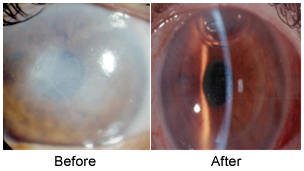
The cornea is the transparent, outermost layer of the eye that protects the eye from dust and germs and helps direct light towards the lens for focusing. When the cornea becomes impaired or damaged by injury, disease or infection, it can become cloudy and significantly affect vision.
For many patients, the only way to treat corneal damage is to undergo corneal transplant surgery. Fortunately, corneal transplantation is considered one of the safest and most effective transplant surgeries in modern medicine. Thousands of corneal transplant procedures are performed each year, and vision is restored in as many as 90 percent of cases. At Vision Eye Care, our corneal specialist, Dr. Munzer Abdulhak, has studied with some of the leading corneal and refractive surgeons in the country. Our entire team is committed to producing the best results possible with corneal transplant surgery, all while exposing our patients to minimal risk.
To find out if you are a candidate for routine cornea transplant or sutureless cornea transplant (DSEK), contact Vision Eye Care at 269-343-0377 today!
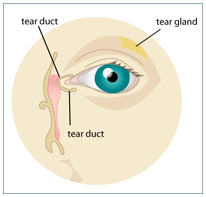
Dry eye occurs when the eye does not produce tears properly, or when the tears are not of the correct consistency and evaporate too quickly. In addition, inflammation of the surface of the eye may occur along with dry eye. If left untreated, this condition can lead to pain, ulcers, or scars on the cornea, and some loss of vision. However, permanent loss of vision from dry eye is uncommon.
Dry eye can make it more difficult to perform some activities, such as using a computer or reading for an extended period of time, and it can decrease tolerance for dry environments, such as the air inside an airplane.
Ask about absorbable punctum plugs that can be placed right in the office! Call Vision Eye Care at 269-343-0377 for more information.
[/col][/row]

Glaucoma is a disease of the optic nerve that can cause complete loss of vision if left untreated. In the United States, glaucoma is one of the leading causes of blindness, especially among older men and women. Simply put, glaucoma is caused by a build-up of excess fluid in the eye. When this clear liquid is blocked and cannot flow out of the eye, pressure in the eye increases to the point where the optic nerve can become permanently damaged. The optic nerve is responsible for sending images to the brain, and if the nerve is significantly impaired, partial or total loss of vision can occur.
With regular medical exams, glaucoma can be detected early on and treated to prevent vision loss. At Vision Eye Care, we offer glaucoma screenings, as well as both non-surgical and surgical glaucoma treatment. To prevent loss of sight from glaucoma, contact Vision Eye Care at 269-343-0377 to schedule a comprehensive examination with our specialists.
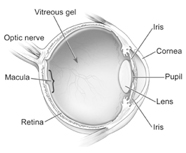
Age-related macular degeneration (AMD) is a disease associated with aging that gradually destroys sharp, central vision. Central vision is needed for seeing objects clearly and for common daily tasks such as reading and driving. AMD affects the macula, the part of the eye that allows you to see fine detail. AMD causes no pain. In some cases, AMD advances so slowly that people notice little change in their vision. In others, the disease progresses faster and may lead to a loss of vision in both eyes. AMD is a leading cause of vision loss in Americans 60 years of age and older.
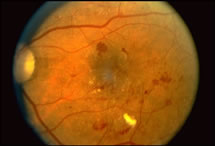
More than 8,000 diabetic patients in the U.S. become blind every year. Early detection, along with improved lifestyle, is your best protection against permanent vision loss. By maintaining strict control of your blood sugar and scheduling regular eye exams, you can significantly reduce the risk of vision loss.
Diabetic retinopathy is the most common diabetic eye disease and a leading cause of blindness in American adults. It is caused by changes in the blood vessels of the retina.
In some people with diabetic retinopathy, blood vessels may swell and leak fluid. In other people, abnormal new blood vessels grow on the surface of the retina. The retina is the light-sensitive tissue at the back of the eye. A healthy retina is necessary for good vision
The eyes react when they come in contact with allergens. An allergic reaction can affect one or both eyes. It causes redness and itching under the eyelid, watering of the eye and sensitivity to light. When waking in the morning, eyelids might feel like they are glued shut. Ocular allergy is most often uncomfortable and unattractive. In its most serious form, ocular allergy can cause damage to the eye.
Ocular allergy is quite a common condition. The strength of the allergic reaction, the length of time it lasts, and the number of times it happens are different for each person. Some people might find they have a strong reaction to an allergen at one time, and a weaker reaction to the same allergen at another time.
Dr. Abdulhak uses a cosmetic skin approach that provides a minimal scar in the removal of lid tumors and cancers. Other corrections of the lids are also treated such as intropiun/extropiun/ptosis using the latest in cosmetic surgery techniques.
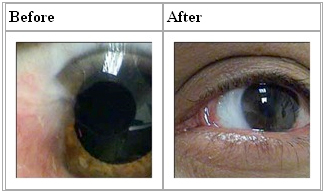
A pterygium is a pinkish, triangular-shaped tissue growth on that invades the cornea. It is an abnormal process in which the conjunctiva (a membrane that covers the white of the eye) grows onto the cornea. Pterygium may be small or grow large enough to interfere with vision, and commonly occurs on the inner corner of the eye.
Pterygium occurs more often in people who spend a great deal of time outdoors, especially in sunny climates. Long-term exposure to sunlight’s harmful ultraviolet (UV) rays, and chronic eye irritation from dry, dusty conditions seems to play an important causal role. With newer surgical techniques, such as using conjunctival autografts, recurrence rates have decreased to almost zero percent.
